How Alpine is rekindling the fire in bid for F1 glory
Could Alpine be Formula 1’s best-performing mid-fielders by the end of this season and regular podium wallahs within 100 races? Adam Cooper speaks to CEO Laurent Rossi and principal Otmar Szafnauer about their five-year plan to move through the ranks and challenge for world titles
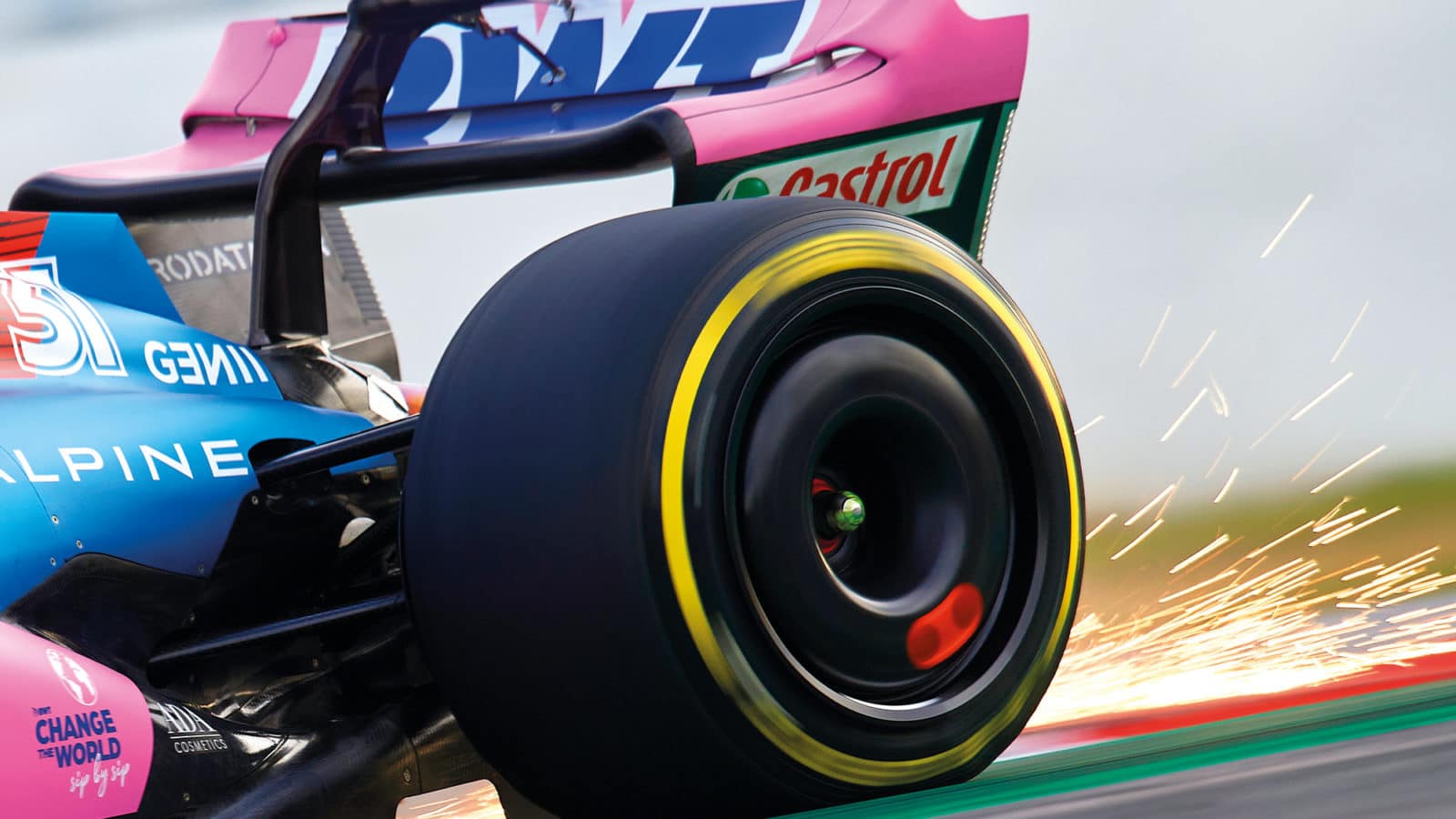
Getty Images
When Fernando Alonso speared off the road during qualifying for the Australian GP, the result of an oil pressure drop triggering a fail-safe mode that shut down the car, there were mixed emotions in the Alpine garage.
On the one hand there was the usual frustration of a missed opportunity and the repair job to come. On the other there was the knowledge of just how fast Alonso had been going, and the promise that it represented. The Spaniard’s first two sector times indicated that he might even have beaten Charles Leclerc to pole, putting him right into the heart of the battle between Ferrari and Red Bull for the race.
The performance indicated that the team is making genuine progress towards its stated target of being a title contender within the remaining four years of the current engine formula, or the slightly snappier ‘one hundred races’ that those seasons will represent.
It was a huge boost for the two-pronged management team of Alpine Cars CEO Laurent Rossi and new team principal Otmar Szafnauer, who was recruited after his acrimonious departure from Aston Martin.
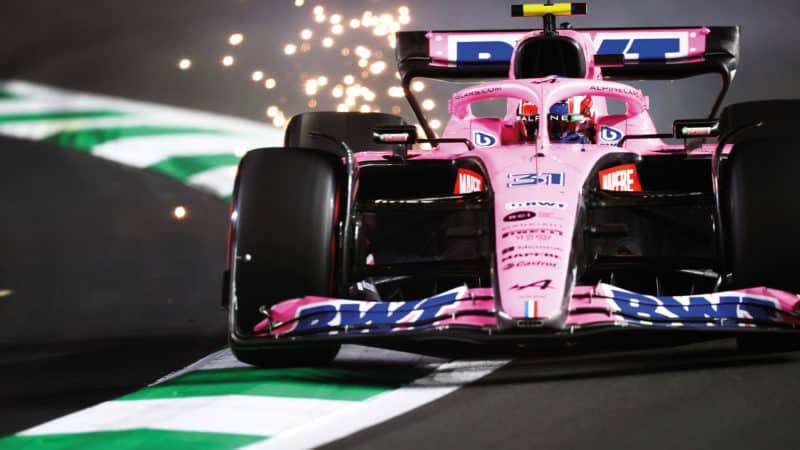
Esteban Ocon took an opportunistic win at Hungary in 2021
Getty Images
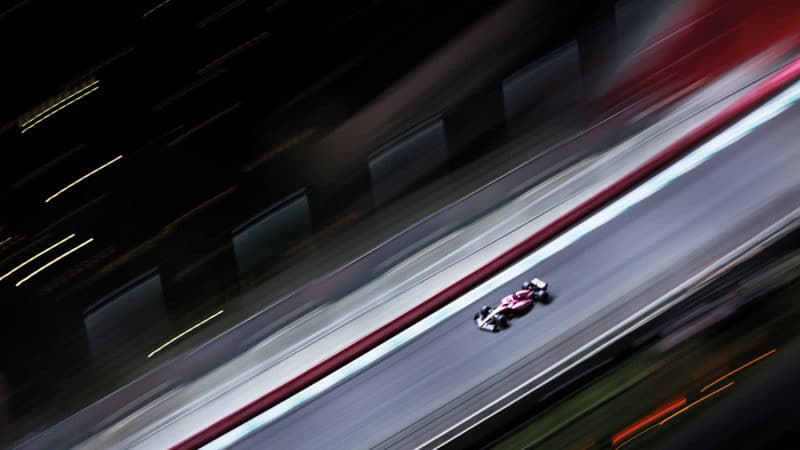
Team-mate Fernando Alonso has shown pace this season
DPPI
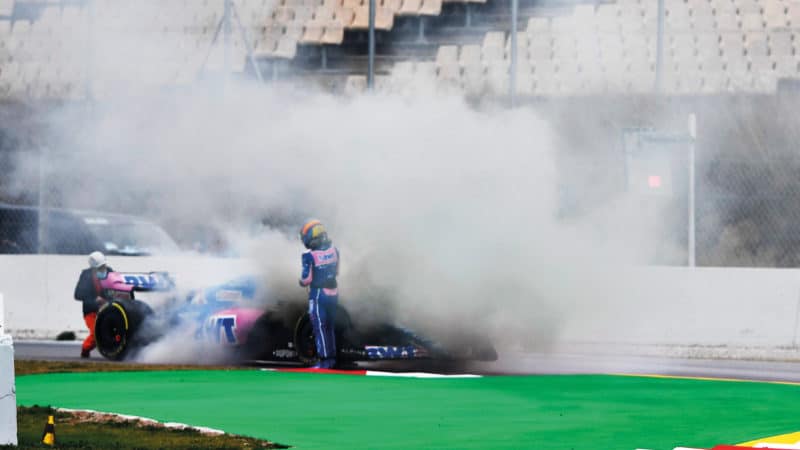
A fire for Alonso at Barcelona in February curtailed the team’s testing
Like McLaren and Williams, Team Enstone has spent years in the shadow of relative newcomers Red Bull and Mercedes, trying to recapture past glories. There are still people in the camp who contributed to Michael Schumacher’s title successes with Benetton in 1994-’95, and rather more who were there for Alonso’s two Renault wins in 2005-06.
Since then the team has been on a rollercoaster ride, surviving the financial straits of the Lotus era before a return to Renault ownership in 2016. The road map under boss Cyril Abiteboul was success within five years – but by the fifth season in 2020 there was the odd podium, but nothing more.
Renault CEO Luca de Meo could have been forgiven for pulling the plug, but instead that summer he green-lit the hiring of Alonso and announced a reboot under the niche Alpine brand. A few months later Abiteboul was ousted and top executive Rossi brought in to oversee the project, with Enstone executive director Marcin Budkowski and former Suzuki MotoGP man Davide Brivio sharing responsibility for day-to-day operations. Unusually no one was officially designated as team principal.
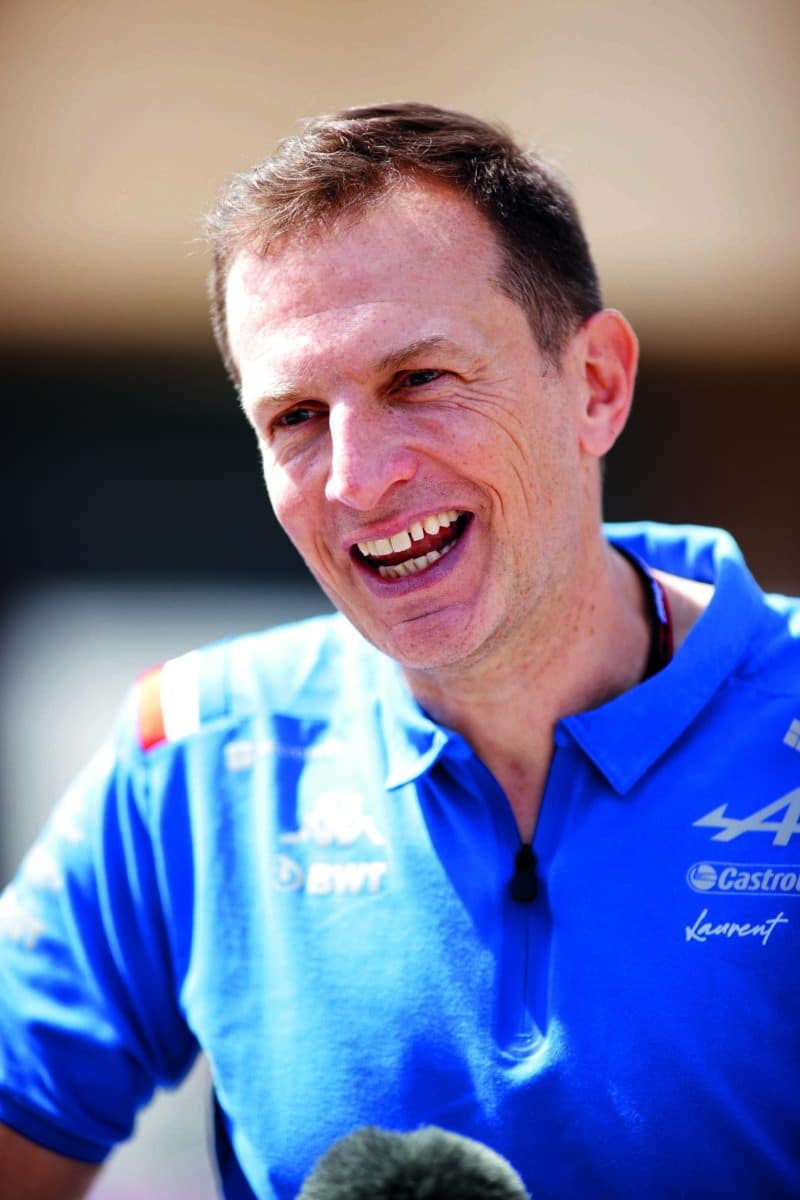
Laurent Rossi was appointed overall CEO of Alpine earlier this year – and is watching and learning
DPPI
A qualified engineer with a Harvard MBA on his CV, Rossi has overall responsibility for Alpine, including its ambitious road car programme. However his priority in 2021 was to immerse himself in F1.
“At the beginning I didn’t know how much time I would need,” he said. “And I told myself, well, you’re an engineer, so you’re going to go in-depth on trying to understand, see if you can get the hang of it, or at least what’s expected for me at my level.
“I am never going to draw a wing or anything like that! But I can understand, I can talk to them. So I quickly realised that a full year will be necessary, and good enough for me to have a good grip on the business. It’s not like after one year I can master F1. But it was also necessary that I go rather fast.
“So a year seemed to be the right amount of time, especially since I had a four-year plan in my head, and targets set by Luca de Meo. A year to figure things out, and then four years to deliver, seemed the right time.”
The first season saw the Alpine team make steady progress, despite the handicap of being stuck with the least competitive power unit while all efforts in Viry-Châtillon were switched to an upgrade for this season. However an opportunistic win for Esteban Ocon in Hungary was a huge confidence boost.
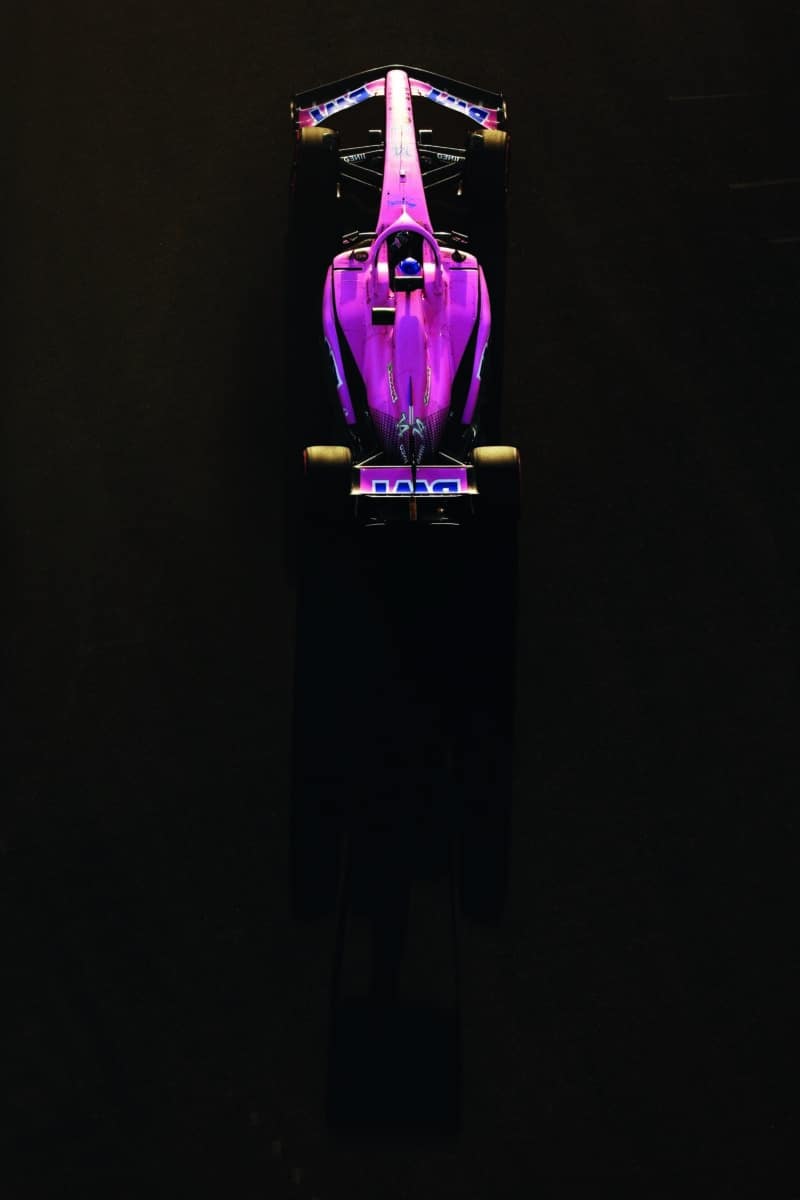
The team used a ‘flipped’ pink livery for the first two grands prix this season.
Getty Images
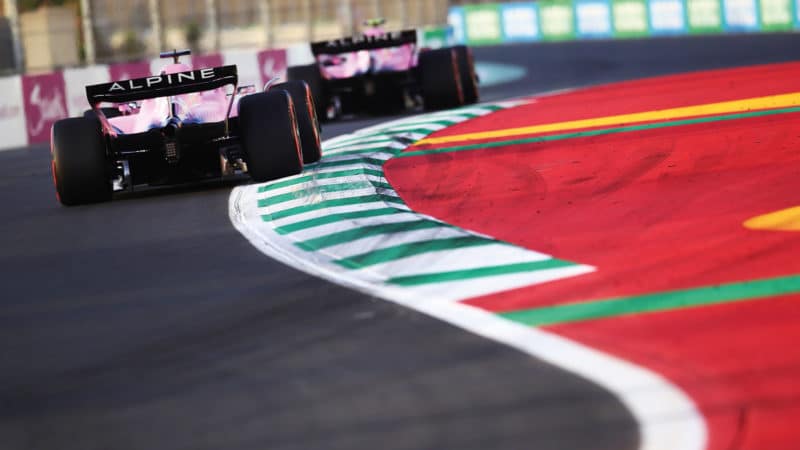
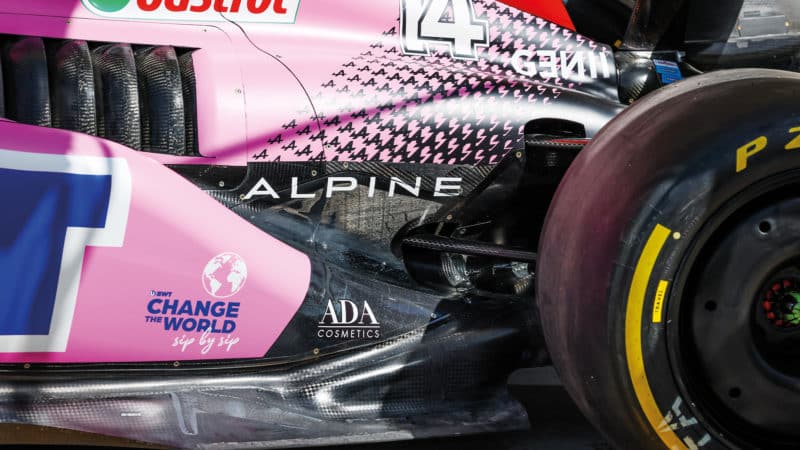
Rossi, meanwhile, watched and learned. Having given himself a year, he made some big calls in the winter, and sent a clear signal that he wasn’t messing about.
“The reason why we had Marcin, Davide and myself leading the team, the three of us without really one team principal, was because we didn’t really have a team principal,” says Rossi. “It’s one hell of a job that requires experience, expertise and legitimacy. And we didn’t have any. So we split the job into three people, which I think we did fairly OK, because we never made a fool of ourselves on track, off track or anything. But obviously, as soon as you have more people, you have more overlaps, interactions, frictions, and it may or may not work.
“You need to align three people instead of one. At the end of the season I realised that it was basically good enough to do what we had to do but was certainly not good enough to move to the next step.
“You need to have one constant presence and line of thought between the factories and the track, which we didn’t have. So I needed to have the same brain constantly on in the three locations. And that requires a big, big scope of responsibilities, and therefore skills and expertise and experience.”
Budkowski was let go, Brivio moved to a driver academy role and the search began for a new team principal.
More controversially, Renault adviser Alain Prost was left without a job, prompting a frustrated outburst from the former world champion when the news leaked out.
“We agreed to disagree on his possible role with a team principal in the team,” says Rossi. “Because I was obviously going towards a team principal structure. And as such that was having an impact on the way he could interact with me, or with a team principal. So we figured out that what he had in mind, and what I had in mind, was not really aligned. And we decided to part ways.”
Having decided that the Budkowski/Brivio combo hadn’t worked Rossi started with the list of proven bosses at other teams, and had a look at who might be able to jump ship.
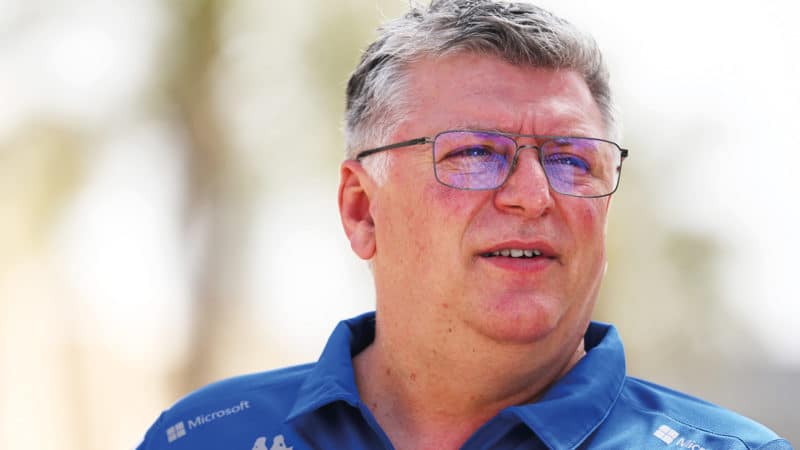
Alpine team principal Otmar Szafnauer has brought a can-do attitude
With fortuitous timing Szafnauer fell out with Aston owner Lawrence Stroll and became available. A large part of the American’s appeal was his history of overachieving with limited resources at Force India, before the Stroll takeover provided the funds to expand.
“You hit the nail on the head,” says Rossi. “I knew he was a guy that would not come in and say, ‘Look, I can’t do what the top teams do, because I don’t have the money.’ That doesn’t scare him. And even though now there’s a cost cap in place, some people will always say, ‘Yeah, but they have a head start, they invested so much in 20 years.’
“For him it was like, ‘Sure, we can beat them.’ It’s a different take on things. It’s a very positive. I see what I have, rather than an I-see-what-I-don’t-have type of attitude. Which
I loved, which is absolutely necessary, and is very legit, because he’s done it many times.
“People in the paddock, and the team in Enstone, they respect that a lot. So he’s pedigree, and his trophy cabinet, if you will, is speaking for him. He’s an engineer and a seasoned one, so that also goes a long way. Also Enstone is a very techy engineering culture. They love doing brilliant, refined cars. And so it’s nice to have an engineer at the top. They’re respected even more.”
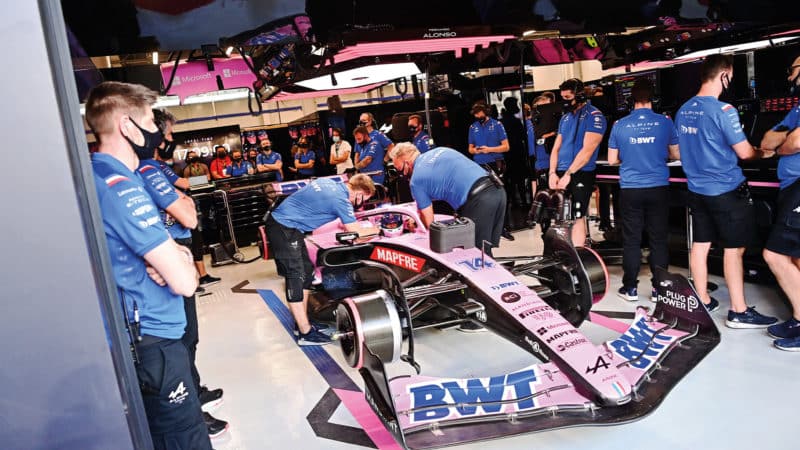
2022 has been a troubled start for Alonso, here in practice at Jeddah
Getty Images
For Szafnauer the Alpine opportunity could not have been better timed. Having done an incredible job to save Force India from extinction in 2018, and then overseen the transition to Aston Martin, he found himself marginalised after Stroll brought in Martin Whitmarsh above him. What was initially explained as a group role for the former McLaren boss turned out to be much more of a hands-on involvement with the F1 team.
“It became clear to me that Martin was going to take over a lot of my responsibilities, over 90%,” says Szafnauer. “I had a contract with them. But once 90% of your job responsibilities are taken by somebody else, you can make your way out. And that’s when I seriously started talking to Alpine, which was at the beginning of this year.”
In contrast he has been promised autonomy by Rossi: “Laurent has a much bigger job than the F1 team. He’s the CEO of the entire Alpine group, and F1 is just a pillar of it. For example, he might come to Enstone between five and 10 times a year.
“The reason Laurent and Luca hired me is for my knowledge, my experience, and my past performances in F1. So it’s counterintuitive to think that they hire you for all that, and then micromanage you. There’s no risk of having the same issues that were at Aston.”
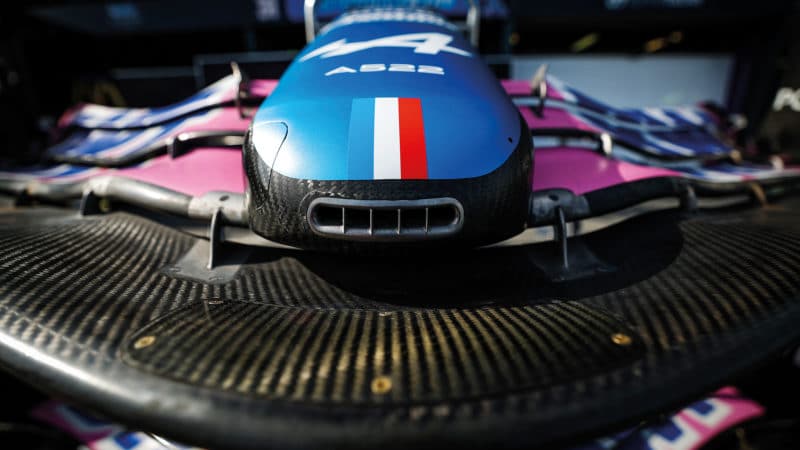
French colours, although the Enstone lineage goes back to Toleman
DPPI
Much like Rossi in 2021 Szafnauer is still in the process of finding his way around.
“There’s a real good group of people with a very decent amount of infrastructure and resource,” he says. “At the edges, there can be enhancements, we can bring in some other resource that’s lacking, that I’ve seen in other places to a higher level. So that’ll be the next step, to bring in some of those competencies.
“And that’s not at the expense of anything that is done here. It’s an addition. So I’ll start working on that soon. It’s a good group of people who love racing and performing well on track, and they’re very competitive. Two great drivers, so that pushes the team forward. And we’ve got to do a really good job on bringing improvements to the car this year. That’s got to be the key.”
It’s a different challenge compared to the one he tackled for Stroll: “You’ve got to remember back in the Force India days we were cash-strapped. There are a lot of things that place needed, where here, that isn’t necessary. It’s looking how to maybe reorganise, make it a little bit more efficient, get parts to the car a bit quicker.
“And we have to make sure that the wind tunnel, which is already a well-oiled machine, just keeps turning out performance, especially now that we’re on such a steep learning curve.”
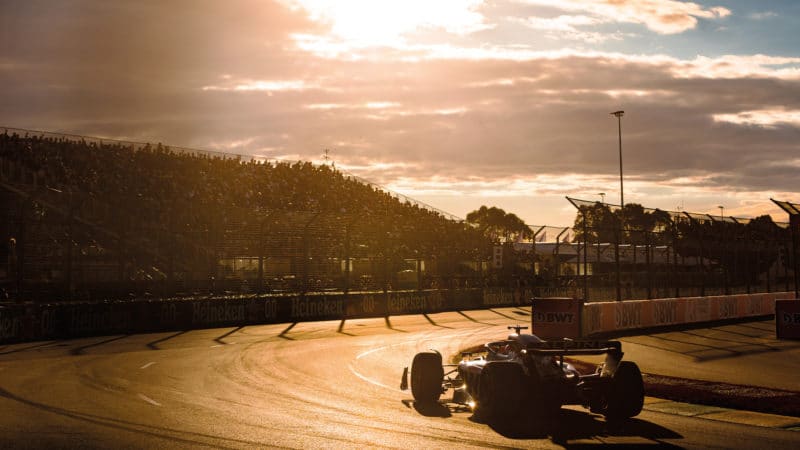
The view from the back end of the field for Alonso in Australia
DPPI
In any organisation established staff can be wary of new bosses, and formerly successful F1 teams can be notoriously set in their ways and resistant to change. Andreas Seidl at McLaren and Jost Capito at Williams have both faced that challenge.
“The best way to do it is to have a good understanding before you make any change,” says Szafnauer. “You can’t just come in and make change for the sake of change.
“If you have a good understanding, and you’re making changes to improve things, everybody will agree with you. No one wants to not improve. But if you start making change for the sake of making change, then some won’t agree with it.
“So that is the key. Force India was last when I got there, but I still took time to have a good understanding before I said, ‘Right, we need to do it this way.’”
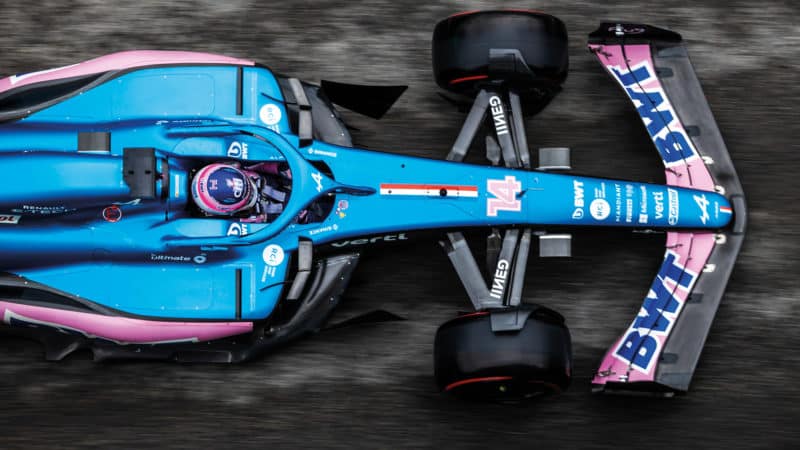
Alonso’s poor luck was again in evidence at the Emilia Romagna Grand Prix in April. After a collision with Mick Schumacher’s Haas, Alonso’s Alpine was out after just a handful of laps
DPPI
An extra challenge for Szafnauer is to manage the race team’s relationship with the Renault engine base in France. His former role as Honda’s point man in Formula 1 before joining Force India gave him an invaluable insight into that side of the business.
“It does help, understanding how powertrain development works,” he says. “It’s different than chassis development. It helps to have a good understanding of what is possible on the powertrain side.
“We work closely with our engine team, because we’re all one team, to make trade-off decisions for best on-track performance. So that’s a massive benefit to have.”
That broad experience of running teams and working with an engine supplier was part of his appeal to Alpine.
“He is a team builder,” says Rossi. “He’s basically constantly connecting Viry, Enstone and the track, and he’s very capable of reconciling, which was the very first thing
I was looking at and looking for. He’s someone who connects the three, and makes them work together, knowing that the base of the track is the day or the week unit of time, versus month in the factories. And this is how you get more value out of a works team.”
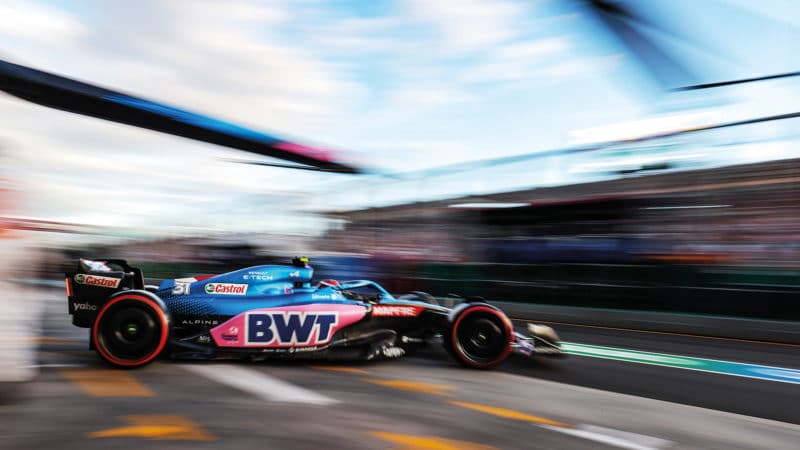
Szafnauer believes he has arrived at Alpine at the right moment in his career, and brings with him experience from his years at Force India, Aston Martin and Honda
Szafnauer arrived with Alpine already on a clear upward trajectory. The 2022 power unit, frozen under the FIA rules for four seasons, represents a major step, while the A522 chassis has looked good thus far. Now the team has to get results, and on schedule.
“I didn’t make the hundred race promise!” smiles Szafnauer. “But the hundred races are an objective for the team. And I’m here to help deliver that objective.
“I think in the short-term, the upper end of the midfield is a realistic target. The rule changes and some of the different development strategies that are out there have produced some surprises, like Haas and Alfa Romeo.
“But thereafter when we all settle down and develop these new regulations, this team being at the forefront of the midfield is a realistic objective. And then once we’re solidly there, which hopefully will be towards the end of this year, then the goal has to be to break into the top three. And that might take a couple of years, but you need a strategy and a plan, and you have to implement it.
“There’s a lot for me to do, because I’ve got to get to know the team at the same time. I’ve been in racing for 33 years now, 24 of which have been in F1, so what better time in my career to take on a challenge like this? The next 100 races, I’ll be 61 or 62 by the time that happens. So a perfect way to see your career into the sunset!”
